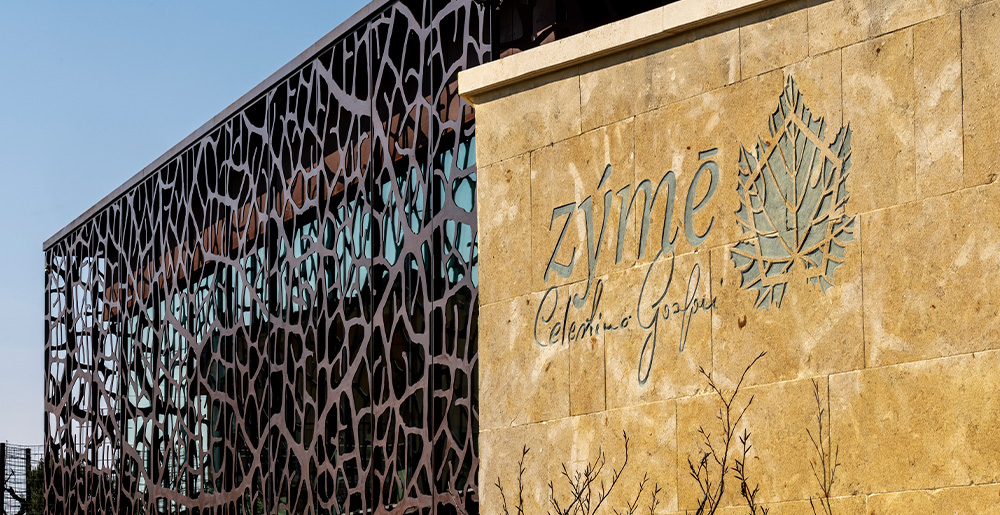
The name Zýmē is the Greek word for “yeast”. Yeast is, of course, an indispensable element in the world of oenology, but it also has a symbolic meaning. It conjures up the concept of naturalness, a fundamental value in Celestino Gaspari’s professional and existential journey, as well as the process of fermentation, understood as a continuous striving towards transformation. In harmony with that philosophy, the winery logo represents a grapevine leaf superimposed with a pentagon, symbol of the five basic elements that combine to yield wine: man-vine-earth-sun-water. Re-establishing an ideal habitat where man and nature are in perfect symbiosis is, in fact, the core of a new, earth-centred humanism, of which Celestino Gaspari and Zýmē are promoters. The objective of this new world-view is the establishment of a new relationship with the environment, with man as the natural guardian of his local corner of the planet, the one who protects it, but also the one who can renew it, reinterpret it. Eco-sustainability with respect to vineyard management practices, transparency of the final product through understanding of its production processes, and respect for the rhythms of nature: these are the cardinal principles of Zýmē’s approach to winemaking. The approach is an element and symbol of a simple style of living in harmony with the earth, in a historical moment in which man, bewitched by the opulence of a false sense of prosperity, has put his own survival at risk. Tradition and innovation are the two complementary tracks on which Zýmē’s wine production moves forward: respecting and caring for the historic wines of the Valpolicella area while also striking out in innovative directions and experimenting with new wines that will enhance and renew the local terroir. Culture, history, tradition, innovation – a glass of wine is so many things, but in Celestino Gaspari’s heart, wine is above all yeast for the mind, and a catalyst that grows a project, Zýmē.




